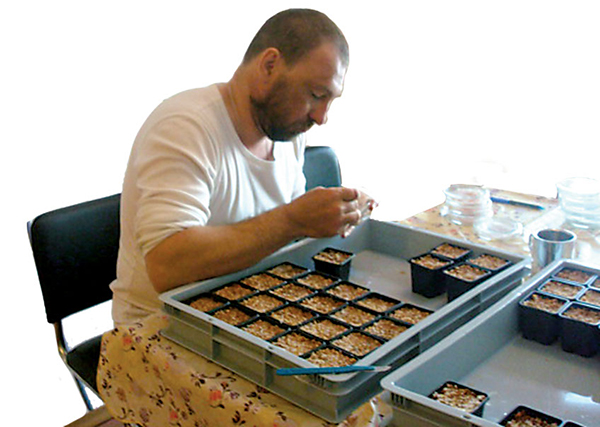Belarusian scientists able to grow vegetables on ice continent
The Belarusian polar kitchen garden comprises two small greenhouses: around 1 square metre each. This high-tech bio-complex of enhanced productivity grows salad, fennel, parsley, basil and other herbs. The technology has been developed at the National Academy of Sciences’ Centre of Photodiode and Optic Electronic Technologies, and at the V. Kuprevich Institute of Experimental Botany. The establishments have provided arctic workers with seeds and special soil and instructed them on how greenhouses should be used.

“The Antarctic kitchen garden has met our expectations, so we are thankful to its developers,” says the Head of the 7th Belarusian Antarctic expedition, Alexey Gaidashov. Having just returned from the ice continent, he explains, “It’s great that polar researchers can eat greens. Their kitchen garden is experimental and not large but we plan to increase its size.”
Russian colleagues appreciate the development, having provided the Vechernyaya Gora (Evening Mountain) base to Belarusians for free use. The station has been operational since Soviet times. “They are our dear guests and, each time, we treat them with fresh greens — ever new,” Mr. Gaidashov smiles.
Russian stations boast nothing of the kind as yet, although the USA, France, Italy, China and the UK run kitchen gardens at their arctic bases. Greenhouses for hydroponic cultures are envisaged within their station projects. “The secret to our high-tech kitchen garden is the lighting system; which uses a special spectrum to ensure a good harvest,” explains the acting head of the laboratory at the Institute of Experimental Botany, Lyudmila Obukhovskaya. “Various reactions in plant cells are inspired by waves of different length. For example, the bio-synthesis of chlorophyll and the transportation of electrons, as well as the regulation of plant growth, have different spectra to those controlling seed growth and root development.”
 In manipulating waves of different length, it’s possible to measure the speed of vitamin and carbohydrate accumulation and the intensity of protein production. These discoveries are helping scientists to develop light-emitting diodes, to respond to plant needs more accurately than traditional lamps. For example, leafy salads and tomatoes needs different spectra. Each Belarusian expedition has a limited term so the plants chosen for growth must come to maturity quickly. However, other choices will be proposed for longer arctic trips.
In manipulating waves of different length, it’s possible to measure the speed of vitamin and carbohydrate accumulation and the intensity of protein production. These discoveries are helping scientists to develop light-emitting diodes, to respond to plant needs more accurately than traditional lamps. For example, leafy salads and tomatoes needs different spectra. Each Belarusian expedition has a limited term so the plants chosen for growth must come to maturity quickly. However, other choices will be proposed for longer arctic trips.
Antarctic greenhouses allow us to apply new technologies, testing them under extreme conditions. Scientists hope to be able to apply their discoveries on a large scale, at industrial greenhouses. Special lamps for tomatoes are now ready, and Minsk’s Vegetable Factory is testing a 1km technological line. If the project proves economically efficient, as is expected, the new technologies will become widely used across Belarus.
Belarus’ reference:
In line with the Arctic Treaty, any country has the right to set up its own station for scientific purposes, south of the 60° southern latitude. At present, 40 countries run polar stations in the most southern part of the globe. Overall, 45 all-year-round scientific stations operate in Antarctica. Belarus began conducting its arctic studies in 2006 but yet lacks its own base on the ice continent. The opening of a Belarusian owned base is planned by the Republic in the near future.
By Dmitry Gomelsky











